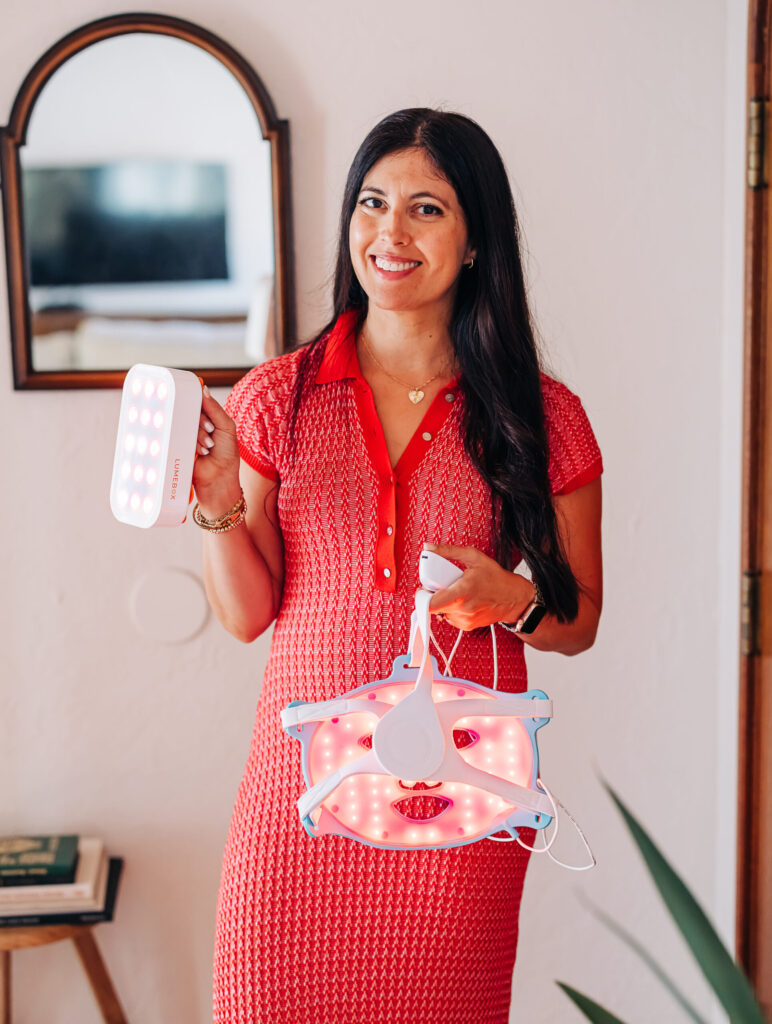Sharing some of my best tips for using red light therapy at home, including how to use red light and what to look for.
Hi friends! How are you? I hope you had an amaizng weekend! Ours was packed with fall fun and now we’re headed back into a week with travel and more events. The fall chaos is in full swing, but I’m loving it.
When things are crazy, I try to stick to the pillars of my routine as closely as possible: daily walks, strength training a few times each week, meditation, hydration, nutrition, and my favorite biohacking tools, like red light.
If you’ve been hanging out here for a while, you know I’m a huge fan of wellness tools. Between mom life, work, and workouts, anything that makes recovery, energy, and skin health easier (and more convenient) is a win.
One of the tools that’s been a total game-changer for me is Red light therapy.
It’s one of those things that seems almost too good to be true – glowing skin, reduced inflammation, better recovery, deeper sleep – but the research behind it is pretty incredible. Today, I wanted to chat about what look for in a red light device, how to use it effectively, and the pros and cons of at-home red light therapy (plus two of my favorite brands: HigherDOSE and Lumebox).

Red Light Therapy at Home: Device Guide & Best Use Tips
What Is Red Light Therapy?
Red light therapy (also called low-level light therapy or photobiomodulation) uses specific wavelengths of red and near-infrared light to help your cells produce more energy (ATP).
Think of it like this: your skin and tissues have tiny receptors that absorb light the way plants absorb sunlight. That energy boosts your cells’ performance – improving circulation, supporting collagen production, easing inflammation, and even speeding up muscle recovery.
What to Look For in a Red Light Therapy Device
Before investing in an at-home red light device, it helps to know what actually matters.
Here’s what I recommend checking:
1. Wavelength Range
Look for a device that offers both red light (around 660 nm) and near-infrared light (around 850 nm).
Red light supports skin health and surface-level rejuvenation, while near-infrared penetrates deeper into muscle and tissue for recovery and inflammation support.
2. Power Density (Irradiance)
A good at-home device should deliver between 30–100 mW/cm² at a few inches away from your skin. This ensures you’re getting a therapeutic dose of light energy without long exposure times.
3. Treatment Area
If you want to focus on your face or neck, a portable panel (like the Lumebox) is perfect.
If you want a full-body experience, a larger panel or wrap (like the High